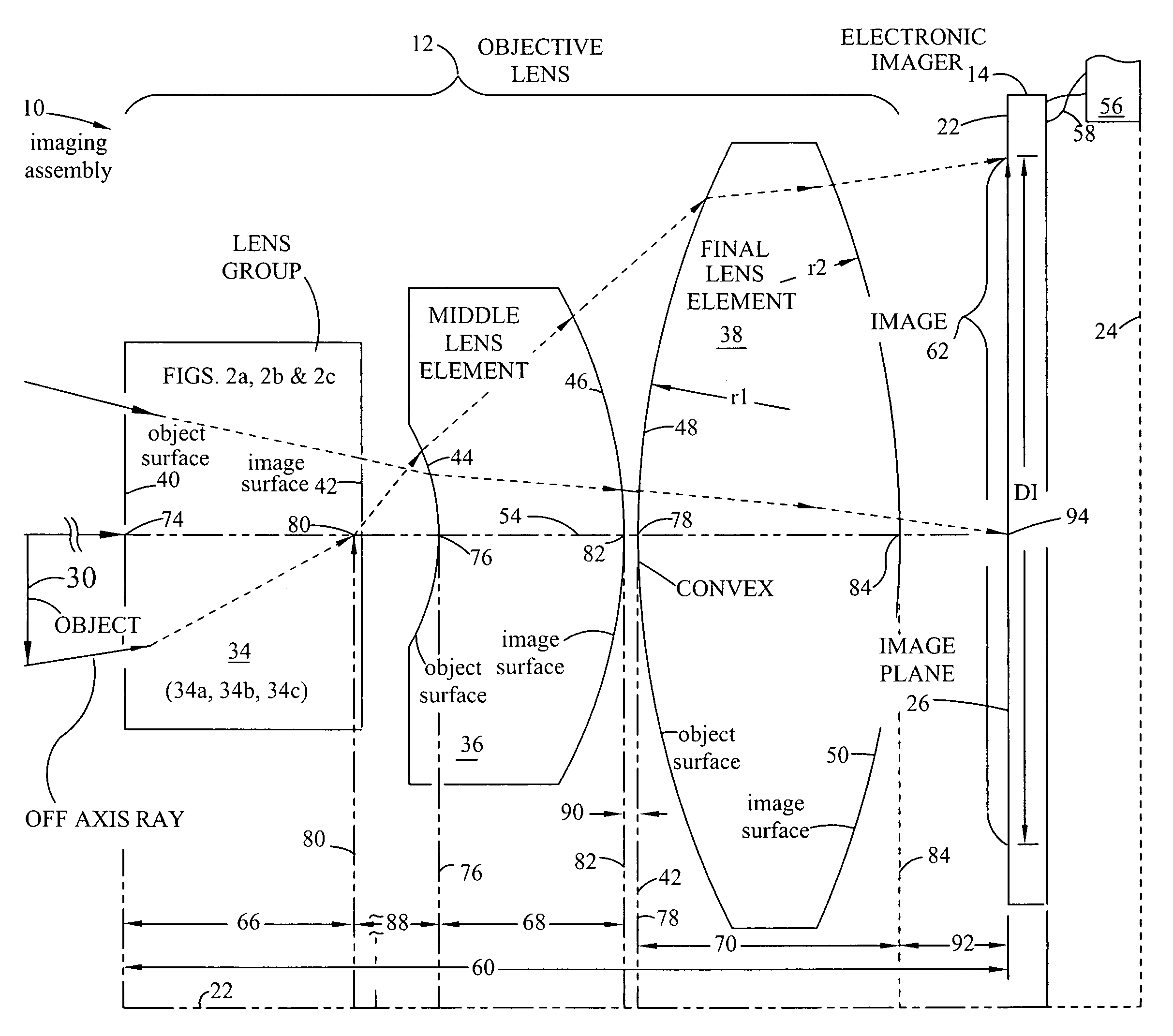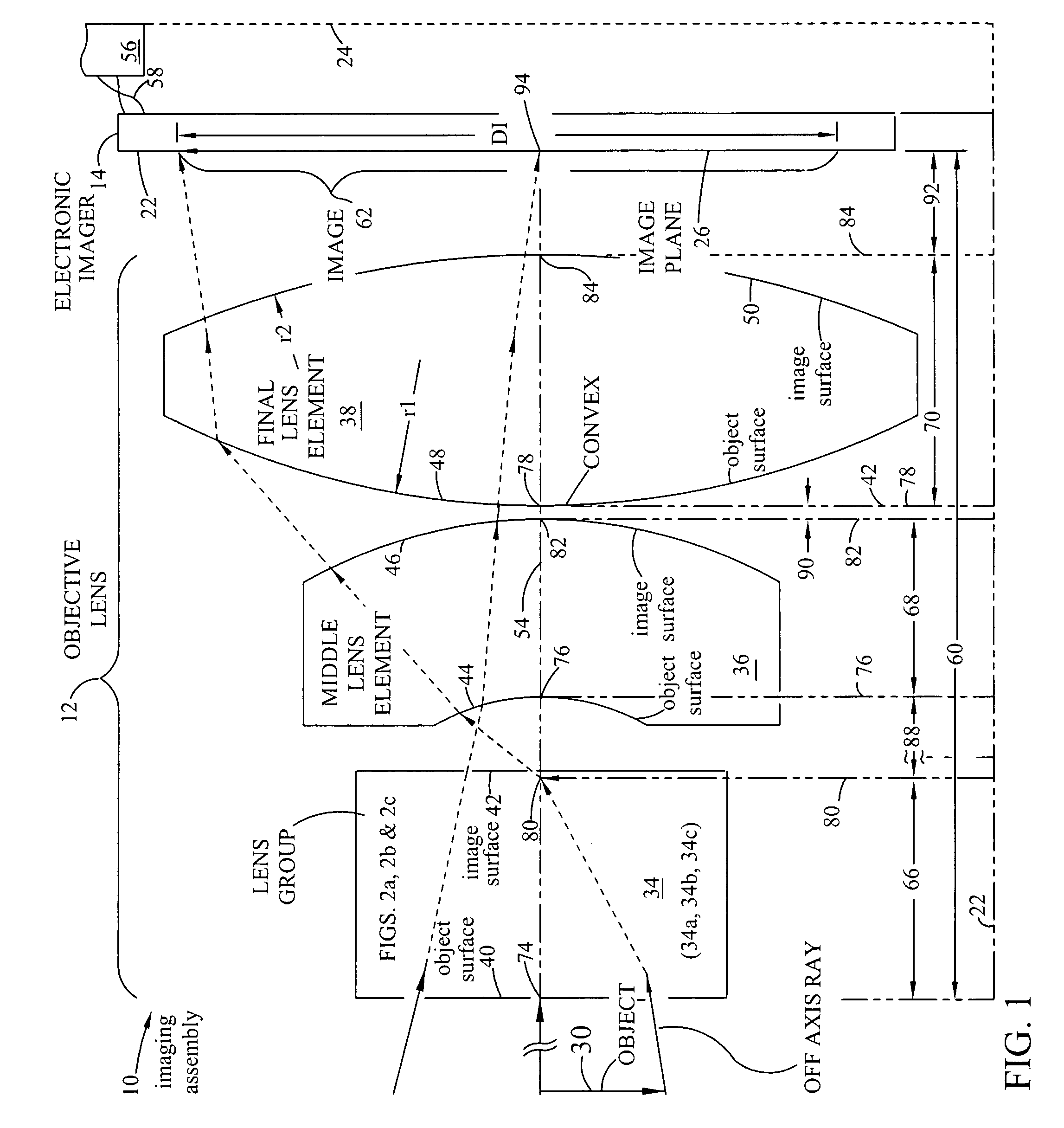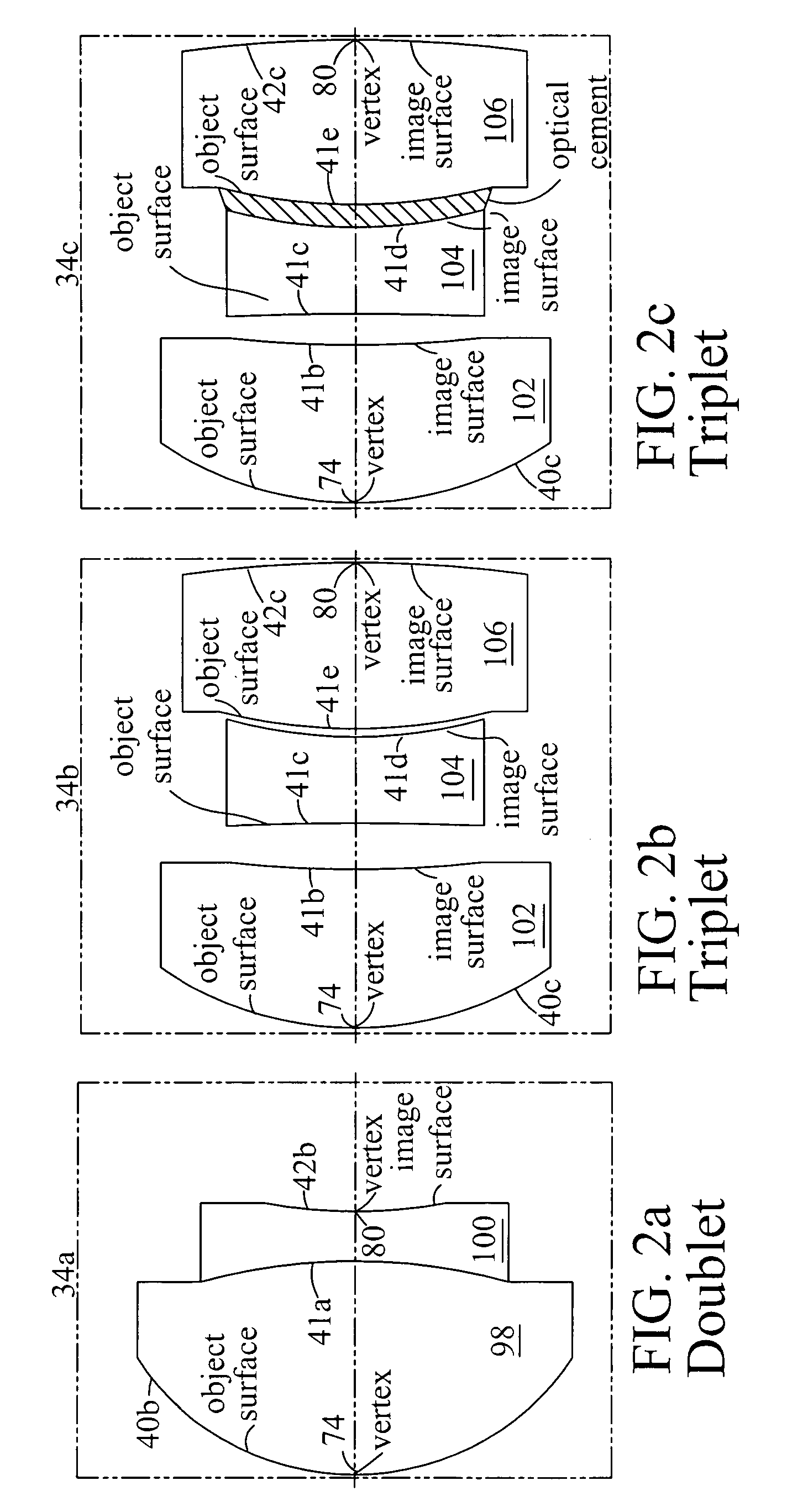Objective lens
a technology of objective lens and lens body, applied in the field of compact lenses, can solve the problems of reducing the sensitivity of the lens to dramatic temperature changes, and achieve the effects of reducing the incidence angle, reducing manufacturing costs, and optimum combination of imaging quality
- Summary
- Abstract
- Description
- Claims
- Application Information
AI Technical Summary
Benefits of technology
Problems solved by technology
Method used
Image
Examples
second embodiment
[0058]Table 2 has a first and second set of six rows each. Table 2 is used in connection with Table 1 to characterize the middle lens element surfaces 44 and 46 for the second embodiment using the doublet of FIG. 2b. The first or top set provides the D, E, F and G coefficients for a prescription in accordance with Equation 1 for middle lens element object surface 44. The second or lower set provides the D, E, F and G coefficients for a prescription in accordance with Equation 1 for the middle lens element image surface 46. Coefficients are not provided by rows 5 and 6 for coefficients H and I. These coefficients would be initialized to be zero.
[0059]
TABLE 2Aspheric coefficients for surfaces of the middle lens element 36RowSurface 44 of the middle lens element 36,an EVENASPH Lens Surface1D−0.155454972E−0.16930173F 0.589310654G−1.00120365H6ISurface 44 of the middle lens element 36,an EVENASPH Lens Surface1D−0.0268012692E 0.0009468343F−0.0002215664G−7.01E−055H6I
[0060]Row 6 provides a p...
first embodiment
[0065]Table 3 provides a second preferred embodiment of the present invention. The surfaces are all STANDARD. There are no aspheric surfaces. The triplet lens within phantom box 34b is formed with three separate lenses as shown in FIG. 2b. When formed, the lens group is substituted for the lens group 34 in FIG. 1. A prescription for its surfaces is provided in rows 1, 2, 3, 4, 5, 6 and 7 of Table 3. As in the case of the first embodiment, the lens group object surface (40c) collects rays of light from the object 30 shown schematically in FIG. 1. FIG. 2b shows the triplet formed from first lens elements 102, second lens element 104 and third lens element 106. The three lens surfaces are characterized as STANDARD, therefore, each of the three surfaces are spherical surfaces.
[0066]Row 2 of Table 3 shows that the radius of surface 40c is 2.25801 mm and the thickness of lens element 102 is 1.058656 mm.
[0067]Row 3 of Table 3 shows that the radius of surface 41b is 7.551701. The distance t...
PUM
 Login to View More
Login to View More Abstract
Description
Claims
Application Information
 Login to View More
Login to View More - R&D
- Intellectual Property
- Life Sciences
- Materials
- Tech Scout
- Unparalleled Data Quality
- Higher Quality Content
- 60% Fewer Hallucinations
Browse by: Latest US Patents, China's latest patents, Technical Efficacy Thesaurus, Application Domain, Technology Topic, Popular Technical Reports.
© 2025 PatSnap. All rights reserved.Legal|Privacy policy|Modern Slavery Act Transparency Statement|Sitemap|About US| Contact US: help@patsnap.com



